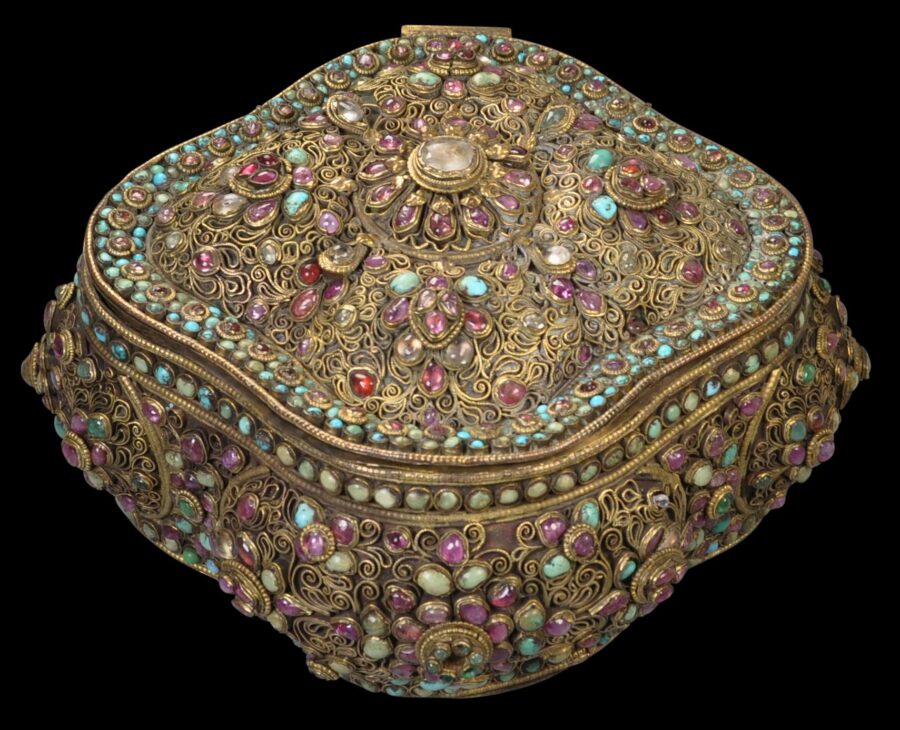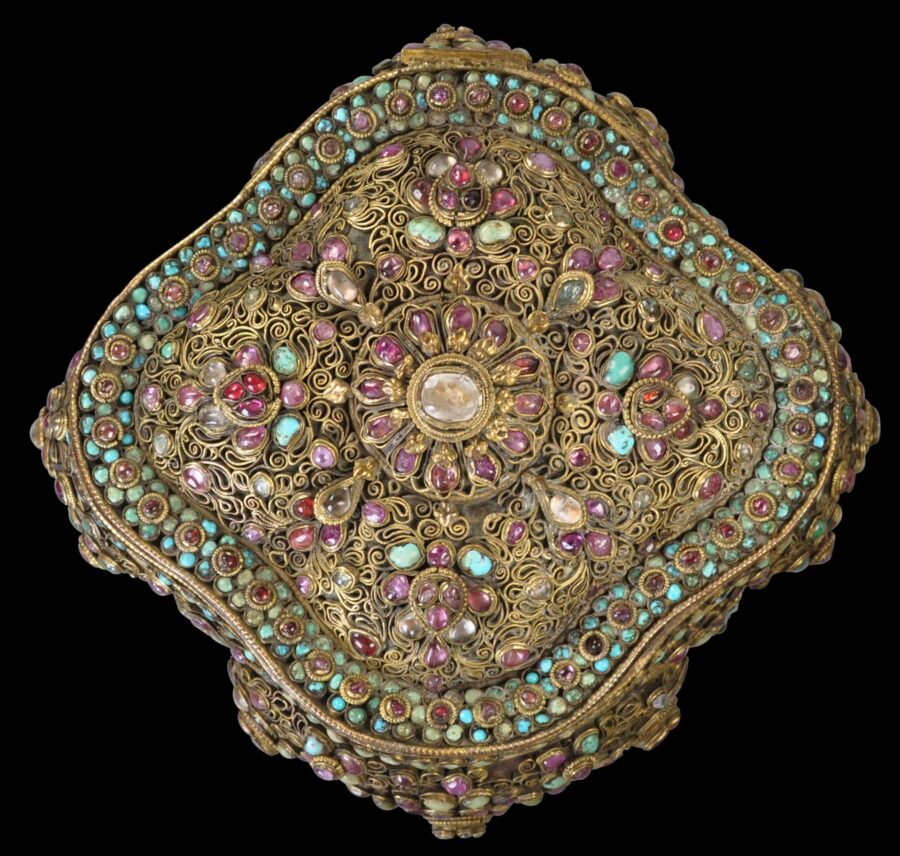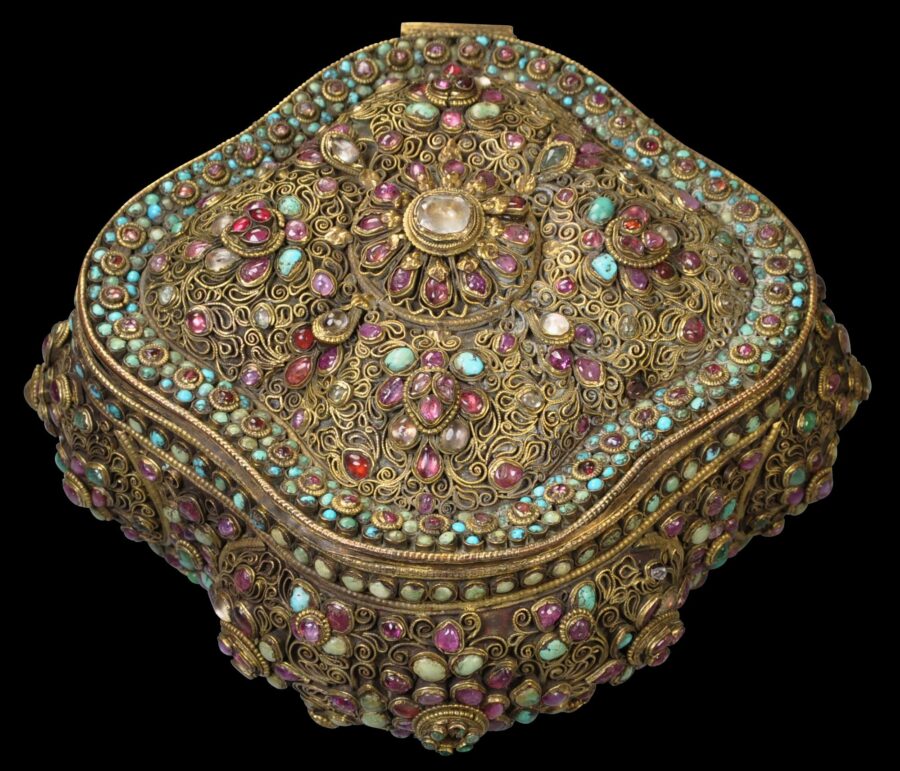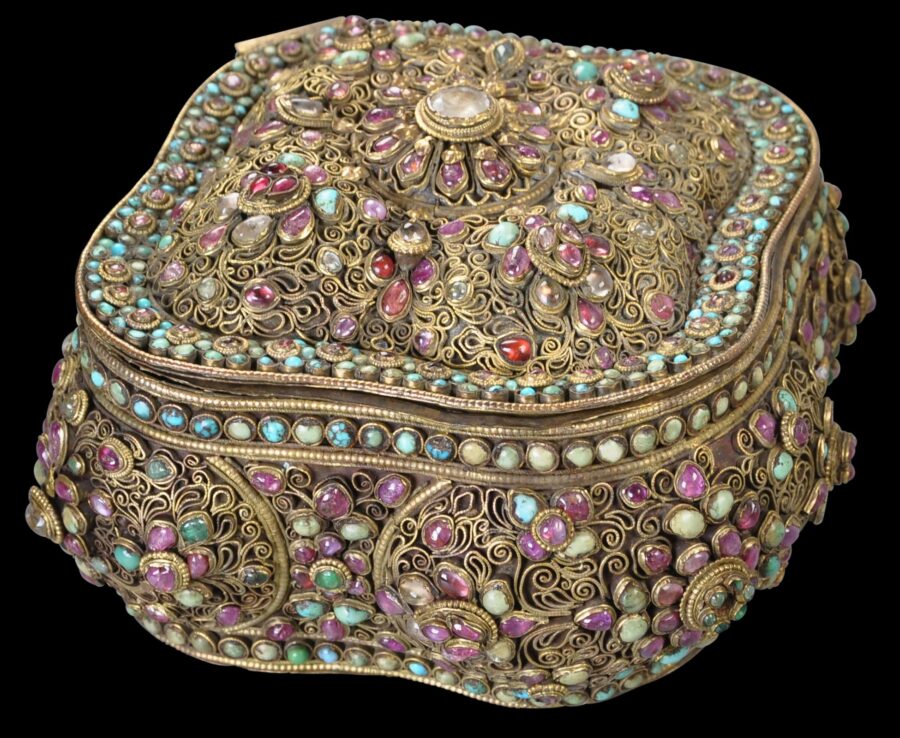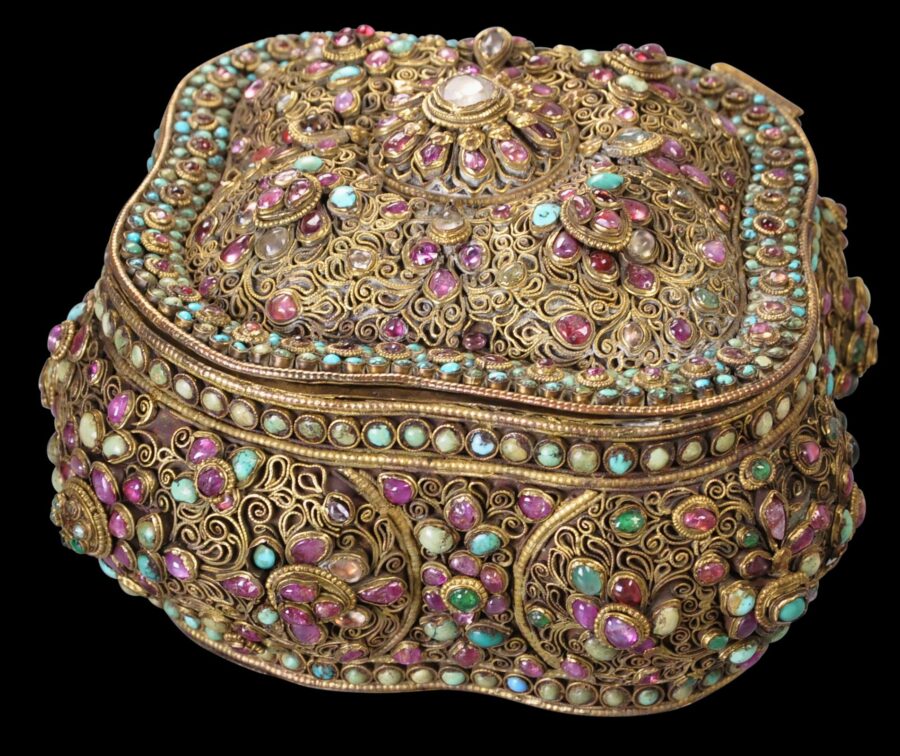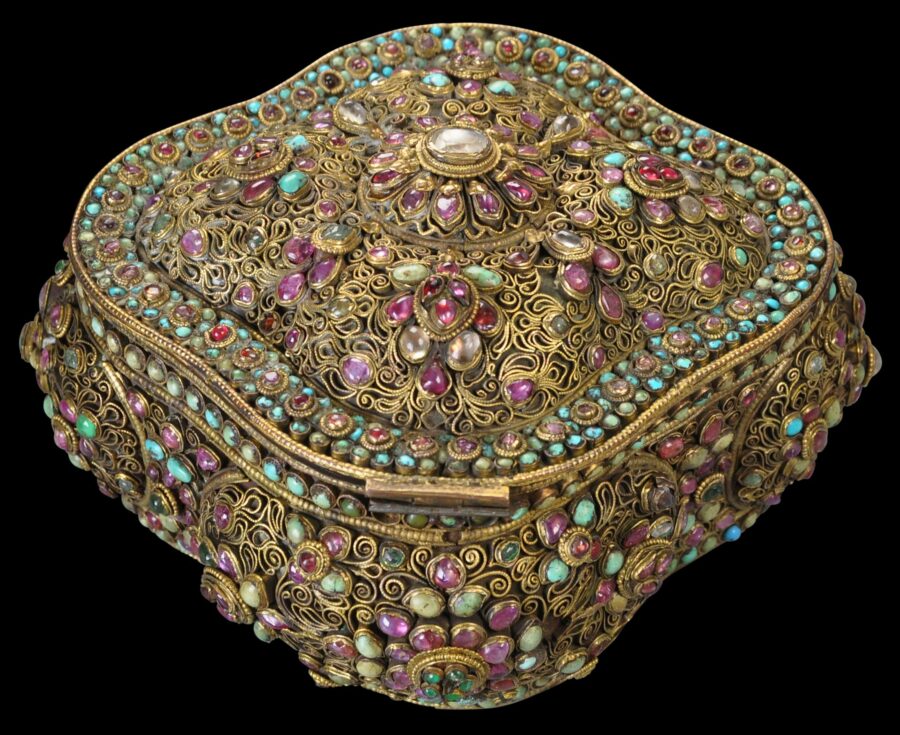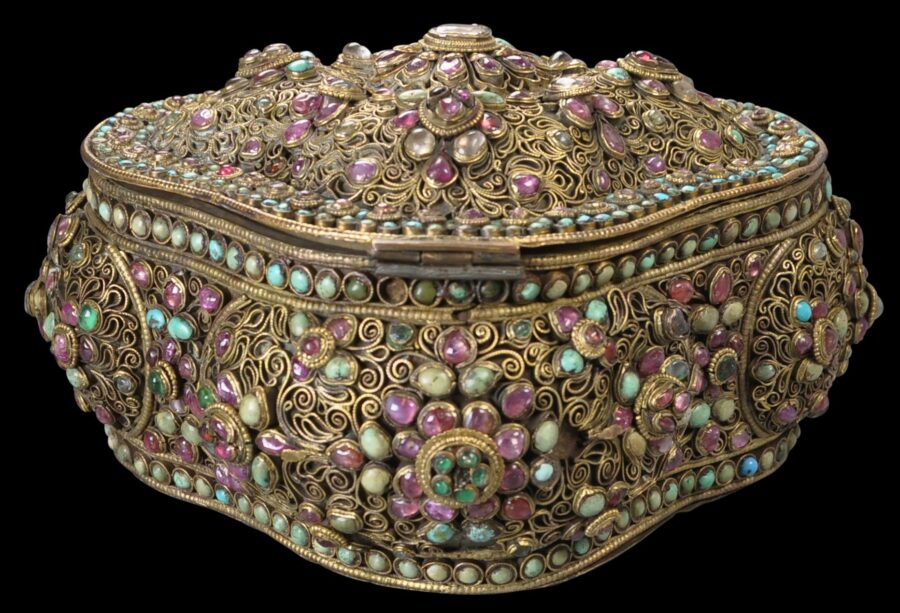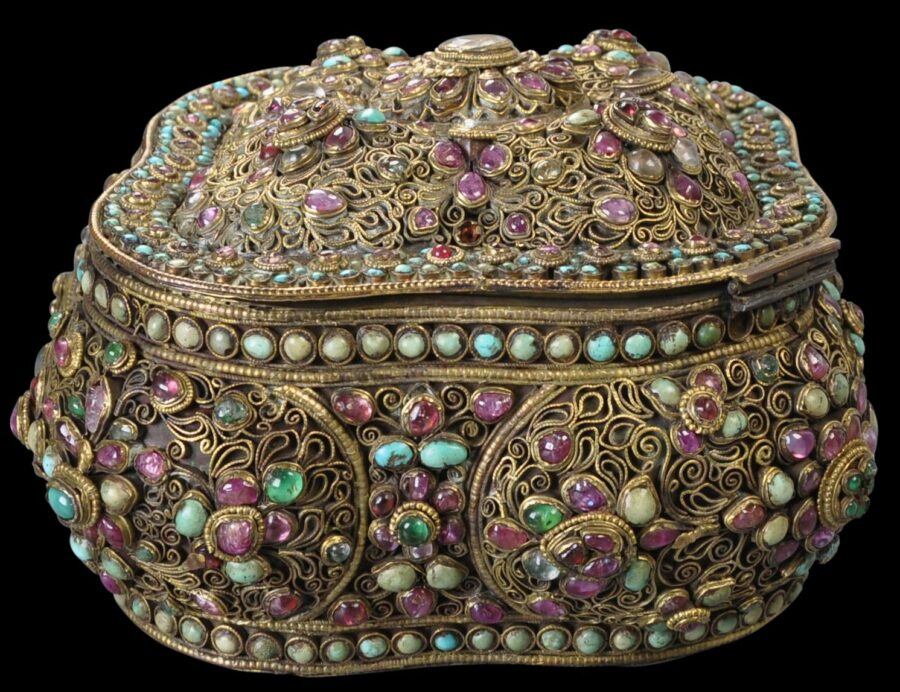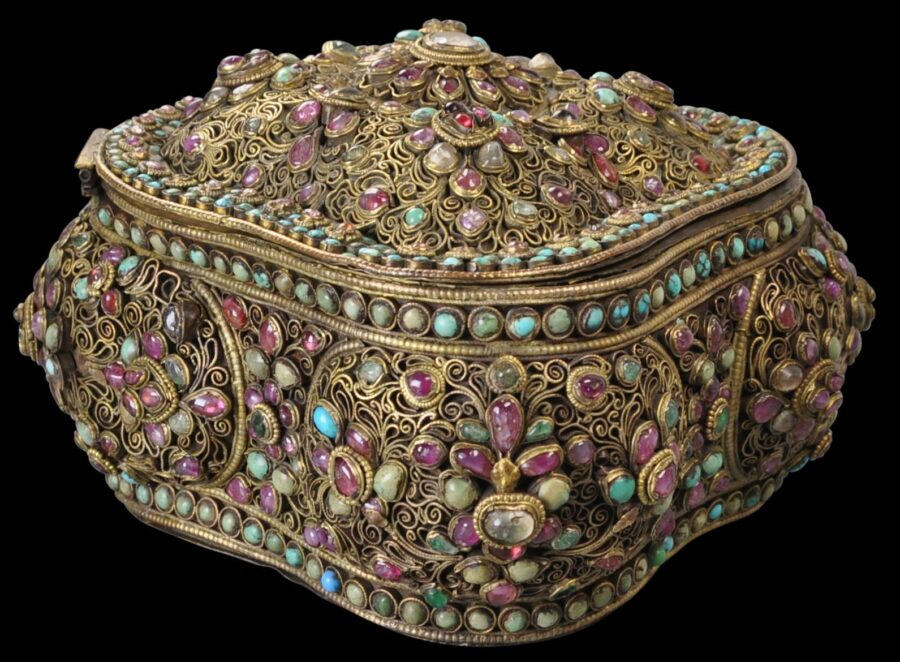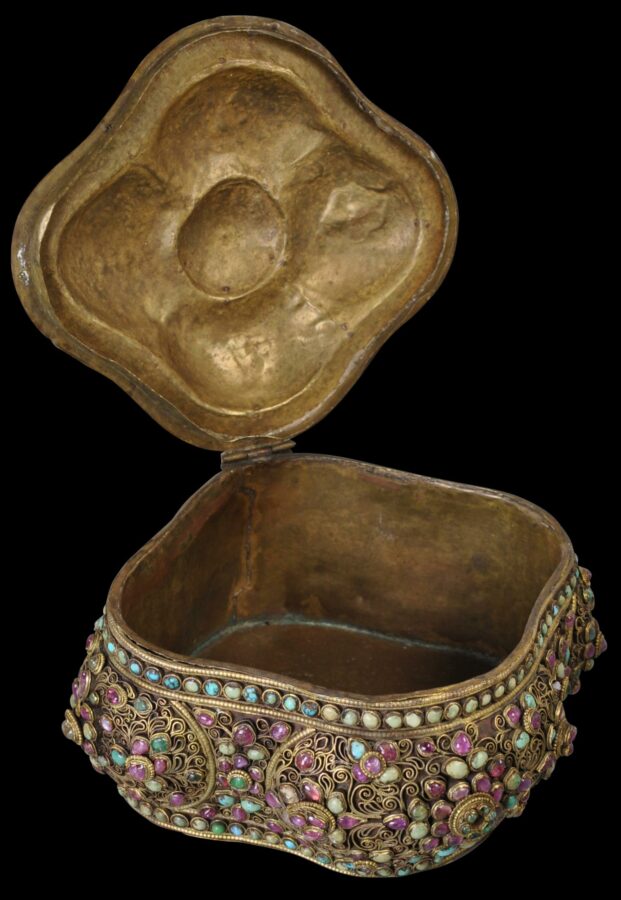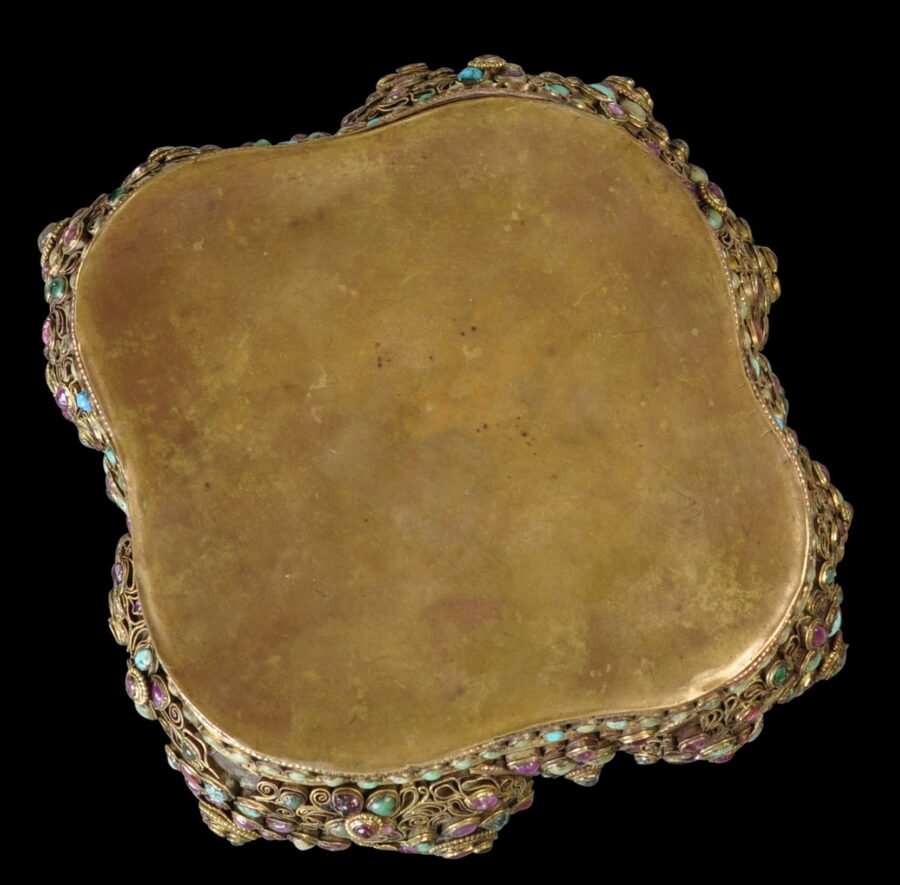This beautiful gilded (gold-plated) lobed box with a domed and lobed hinged lid, has been made from gilded, beaten copper sheets. It has been copiously overlaid with gilded filigree scrollwork and pearled wire on top of which dozens of cabochon rubies, turquoise, rock crystals, other stones have been applied in high box settings, both sprinkled across the filigree work and arrayed in high florettes. Additionally, the lid, and the base – top and bottom – have borders of turquoise cabochons.
All edges have been decorated with gilded, pearled wire.
The work is very much that of the Newar people of the Kathmandu Valley.
The wear, patina of the the gilding, lack of faceting to the stones, the simple box settings for the stones, and the relatively wide spacing of the applied filigree suggest an 18th century dating for this piece and possibly earlier. Similar items in the Jacques Marchais Museum of Tibetan Art are given a 17th-18th century dating and the Metropolitan Museum of Art uses a dating of 17th-19th dating for related items.
There are minor losses here and there to the filigree and some stones but largely, the dense decoration is intact. The lid fits well. The gilding has worn and yellowed to a pleasing tone.
It is not clear whether such boxes so elaborately decorated had specific purposes or were simply made as opulent pieces for local aristocrats.
Overall, this is an excellent item, and one of the more spectacular examples of this type of work that we have seen.
References
Pal, P., Desire and Devotion: Art from India, Nepal, and Tibet in the John and Berthe Ford Collection, Philip Wilson Publishers, 2001.
Lipton, B., & N.D. Ragnubs, Treasures of Tibetan Art: Collections of the Jacques Marchais Museum of Tibetan Art, Oxford University Press, 1996.


